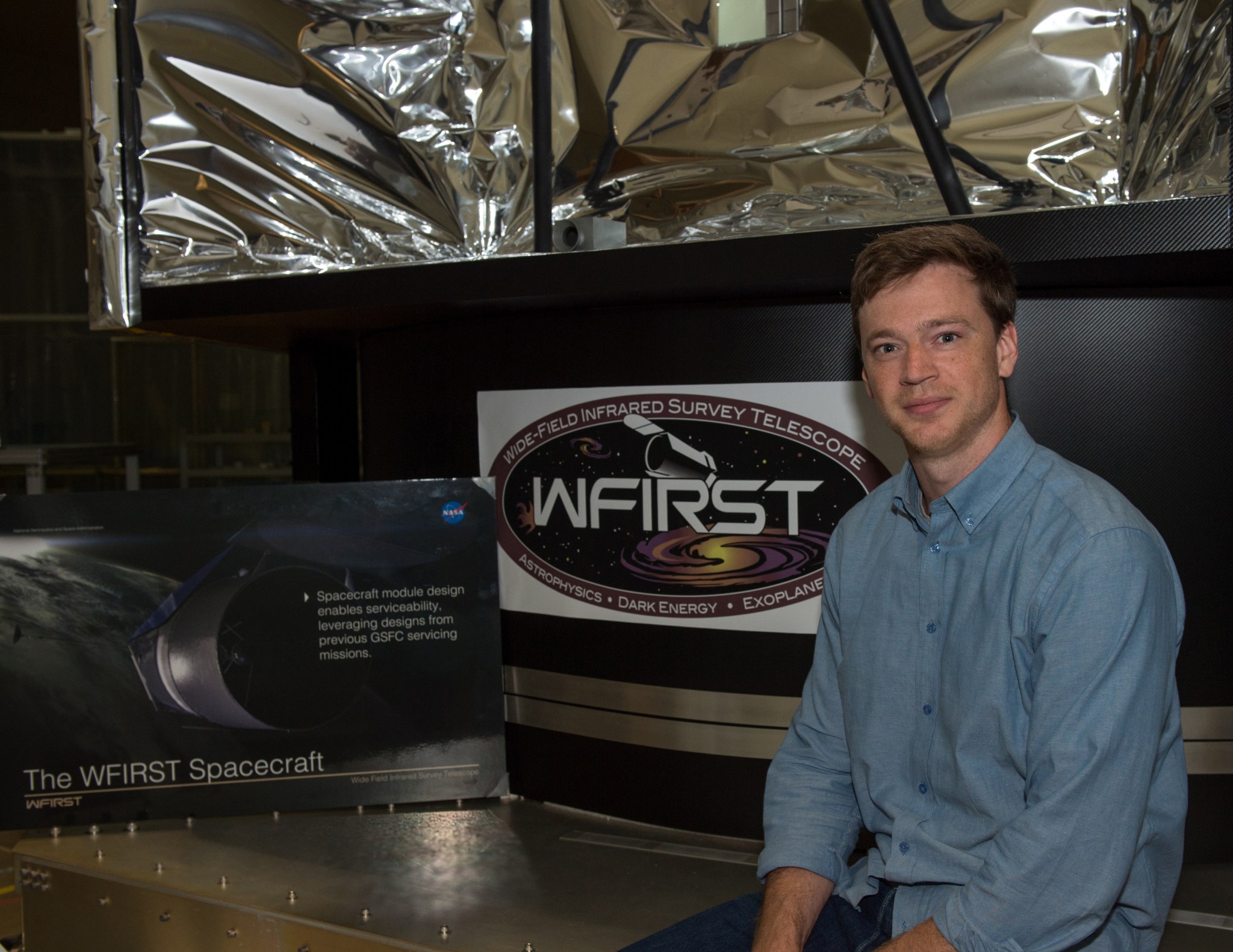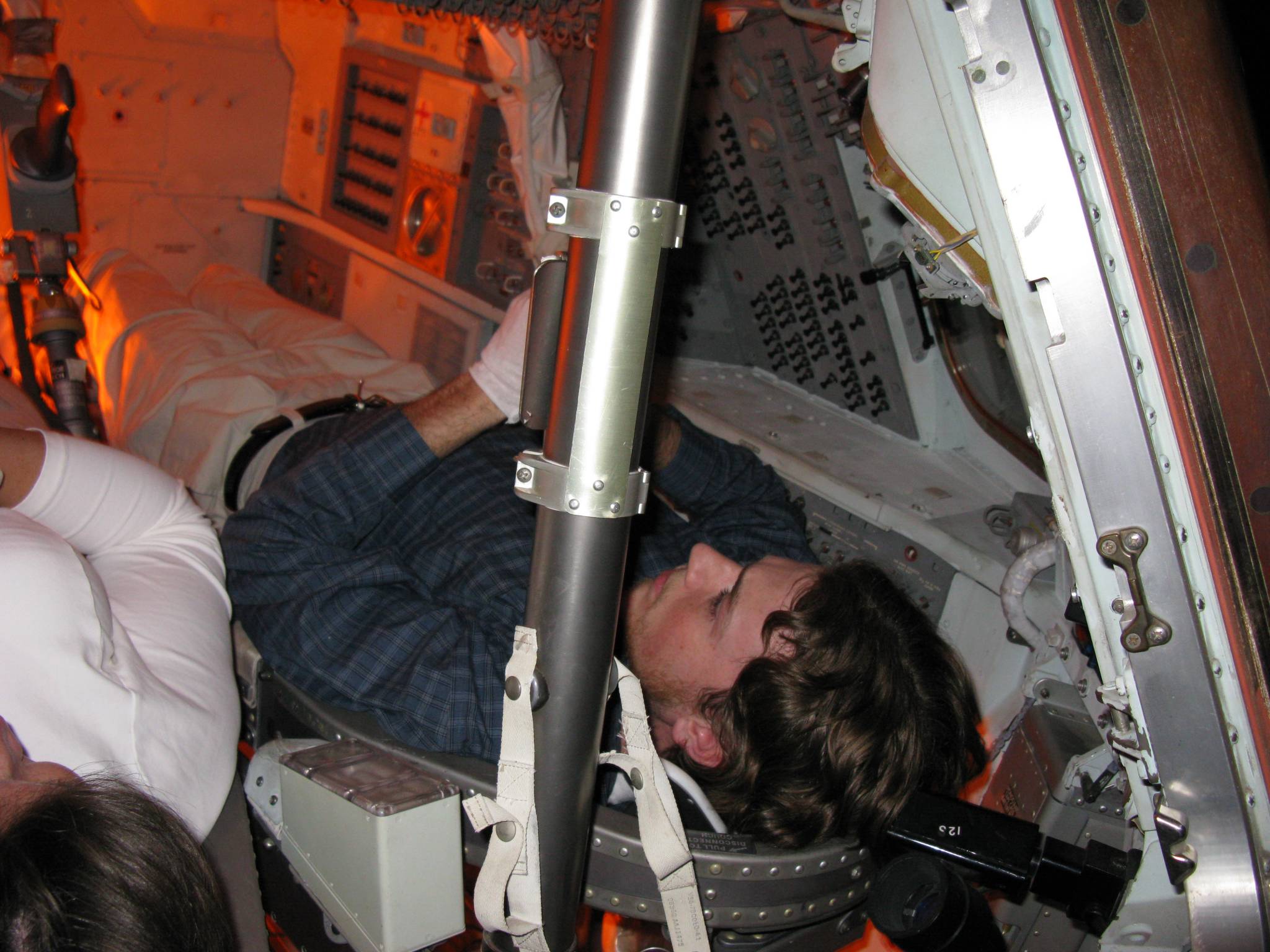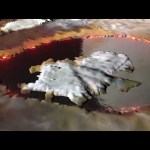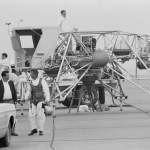
Name: Cory Powell
Title: Lead Structural Analyst for the Wide Field Infrared Survey Telescope (WFIRST)
Formal Job Classification: Aerospace engineer
Organization: Code 542, Mechanical Analysis and Simulation Branch, Mechanical Systems Division, Applied Engineering and Technology Division
What do you do and what is most interesting about your role here at Goddard? How do you help support Goddard’s mission?
I am the lead structural analyst for the Wide Field Infrared Survey Telescope. WFIRST, the top-ranked, large space mission in the New Worlds, New Horizons Decadal Survey of Astronomy, will further our understandings in the areas of dark energy, exoplanets and infrared astrophysics. WFIRST will use existing telescope components, including a 2.4-meter primary mirror the same size as the Hubble Space Telescope’s, and new instruments.
WFIRST recently passed the mission concept review, which allows us to enter into the formulation phase called Phase A. We are working hard on defining requirements, developing our baseline design through trade studies, establishing processes and building our team. In June 2017, we will have the systems requirement review and the mission definition review, which sets all the requirements for the design process.
In addition to my duties on WFIRST, I also serve as the lead for the Kinematic and Dynamic Motion Analysis (KADMA) community of practice under the Mechanisms Technical Discipline Team for the NASA Engineering and Safety Center. The KADMA community helps establish lines of communication between all NASA centers for work in motion study such as modeling deployments and impacts. KADMA allows me to connect with other engineers across the NASA agency.
How are fabrication and integration design drivers?
WFIRST requires us to develop integration techniques to build and support new flight hardware. Although the new flight hardware is still a few years away, we are designing today while thinking about the future in fabrication, integration and testing. Fabrication and integration are important design drivers for WFIRST.
What is unusual about this mission for you?
Every NASA mission comes with a unique set of challenges and WFIRST is no exception. This is a very unique mission, a first of its kind in robotic servicing. I joined this project very early in Pre-Phase A right after WFIRST was ranked first for large space mission in the New Worlds, New Horizons in Astronomy and Astrophysics 2010 Decadal Survey. As the lead structural analyst, this is the first time that I will remain with a flagship program from start through launch, which is rare for my group.
What makes a team lead effective?
We currently have eight structural engineers on the team. After the formulation phase, we will significantly increase the number of our team’s structural engineers. Our job is to ensure that the design meets all structural and mechanical requirements.
To be the most effective in a project this large it comes down to communication. There are many, many moving parts and if you are not communicating effectively there is a good chance that you will be left behind. My job is to make sure that I understand the needs of the big picture, that I have my team ready for the upcoming events, and that I communicate our needs back to the project level managers. The most important qualities of a good leader are strong communication and a solid understanding of what is to come. You must also avoid tunnel vision. As a leader, it is critical to digest all points of view and observe and critique from an unbiased standpoint.
How do you resolve a technical difference of opinion?
When there is a technical difference of opinion, we return to the design. We weigh the options and analyze which is best for the design. People sometimes feel very strongly about their technical opinion, but there is no arguing results. There are times, however, when you do not have the analysis or work to support an argument. This become a bit trickier. If you approach the situation with the mindset that “maybe they are right, maybe I am wrong,” you will not get tunnel vision. The most important thing is to not dismiss any other opinion unless you have a good reason.
How did you become a Goddard engineer?
I became an engineer because I was always very good at math and science. One of my professors at the University of Maryland, Baltimore County, suggested that I apply to the Goddard Co-op Program, now the Pathways Program. After graduating with a bachelor’s degree in mechanical engineering, I became a full-time NASA employee. I have been at NASA for over 10 years.
Do you mentor anyone?

Yes, I have mentored many interns who came through our office. I share a large office with Tim Carnahan, the thermal distortion lead for the James Webb Space Telescope, [GRC(SRA1] and we often house interns. As a result, I am always very close to our interns and help them in any way I can.
I also mentor a Pathways intern, a rising senior on my WFIRST team, Alexis Basantis. Lexi is great. She has unique communication skills for her very young age and I am very hopeful she will become a fulltime employee here. Not only will our WFIRST team benefit from her help, but she has a special ability in outreach that will benefit NASA.
What do you like most about working at Goddard?
I am humbled working here because I always find people smarter than me. By way of analogy, if you are working out at your home, you are going to do fewer pushups then if you are surrounded by bodybuilders urging you to do more. Goddard is full of very smart, passionate people, and when you are surrounded by them, you will work harder and better. I dislike stagnation; in fact, I hate it. I have to feel improvement or progress or I lose interest. Goddard and its personnel keep me humbled and moving forward.
What makes Goddard a great place to work?
Goddard is one, big family. Everyone cares so much about each other. We all expect each other to perform highly. As a result, we want to and do perform well for each other. When you are pulling overtime, and you send out an email to your boss and get one back almost immediately, it lets you know that your boss cares as much as you do. It reminds me of my soccer years; the team unity, the mutual respect and love you have for your teammates.
What words of wisdom would you pass along to somebody just starting their career at Goddard?
You have to have a sense of urgency about your work. Mine comes from my background at working hard labor. I was an apprentice plumber from ages 15 to 17 and an apprentice mechanic from ages 17 to 19. In these lines of work, there are no excuses — you must just get the job done and do it right. When it comes to being a mechanic, a plumber or a NASA engineer, there are a lot of people depending on you to do your job on time and right. You have to have that sense of urgency.
Also, there is no success without failure. If you fail, do not panic and do not allow yourself to become discouraged, but don’t hide from it either. I made a critical mistake in a model when I first started at Goddard. Essentially, I worked for around four months with bad results. It was a terrible feeling; it made me feel sick. My supervisors, Jim Loughlin and Jeff Bolognese, were very quick to encourage me and let me know that sometimes failures happen. It was great having that support. But that is was not enough. I wanted to own that mistake. So I worked the next few weekends until I redid four months’ worth of work in about three weeks. I always work with a sense of urgency.
Is there something surprising about you that people do not generally know?
I was the class clown, the kid that all the teachers, or most of them, hated. I think the third grade was my low point. I went to Thomas Pullen School in Maryland at the time, and they gave out E’s. I got an E in behavior! I think I got an E in math and spelling too. That teacher really disliked me. Funny, I got an E in third grade math and never got less than an A in any math class in college.
Also, I do everything there is to do on a skateboard. I have a half-pipe in my backyard. When I was young, I was more into street skateboarding – rails, stairs and gaps. At this stage in life, I just try not to break any more bones or get any more concussions. I have fractured my skull, broken both elbows, ribs, nose, cheekbone, hip, leg, and the list goes on.
When we moved to Annapolis, my wife introduced me to wakeboarding, which is basically like waterskiing with a board strapped to your feet. That’s my new passion. I am not flipping or doing any of those crazy moves you see on the X Games, but I go fast and I go big.
Another thing that usually surprises people is hearing my background. My mother was born in the United States as were all of my siblings, but that is as far back as we go. My father is 100-percent Welsh and was born in what is now Tanzania, Africa. My mother’s family is from Peru. My brothers and I all live within about 30 miles of each other and our parents. The rest of our family are in Peru and South Africa. It is great having a small, tight family here in the U.S., but I miss my extended family and it is too expensive to visit as much as I would like.
What goes through your head before doing a hard board trick?
John Cardiel. That’s it. That’s what I think. I say his name over and over again in my head. He was my favorite skater growing up. He has no low gears. There is a great story of him literally getting off of a 12-hour plane trip, jumping on his board, and trying to hit this 10-stair rail without a warm up. He clipped this chain that was up attempting to prohibit the stairs use for skateboarding and fell to the bottom. He instantly got up, ran back up the stairs and hit it again, this time landing it. He is on another level when it comes to committing. He had an accident and was hit by a bus while on tour and has permanent spinal damage. He can skate, but not like he used to. I just say his name over and over again and do my best to fully commit like he always did.
What is your “six-word memoir?” A six-word memoir describes something in just six words.
Who would’ve thought I’d get here!
By Elizabeth M. Jarrell
NASA’s Goddard Space Flight Center, Greenbelt, Md.

Conversations With Goddard is a collection of Q&A profiles highlighting the breadth and depth of NASA’s Goddard Space Flight Center’s talented and diverse workforce. The Conversations have been published twice a month on average since May 2011. Read past editions on Goddard’s “Our People” webpage.



























